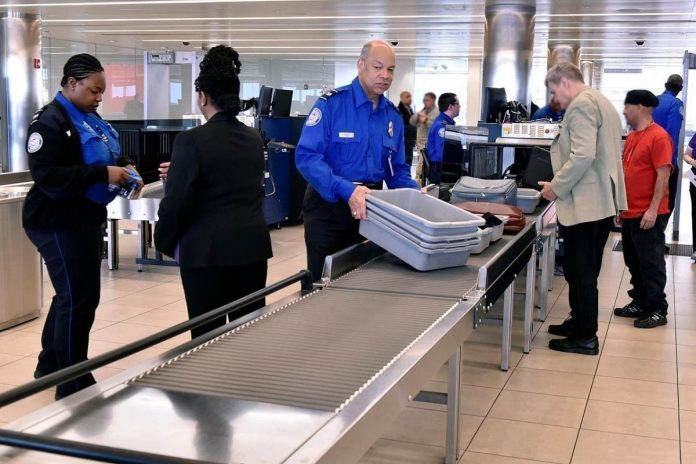While commercial air travel has been ‘a thing’ for over 80 years, the travel process is fraught with inefficiencies. While the early years of air travel operated at a more leisurely pace, modern-day flying has become more stressful. Time (and being on time) has become more critical than ever – for airports, airlines, and passengers. Therefore, making every part of the journey as efficient as possible can make things better for everyone. Parallel divestment is one particular method that needs to be more common. So what is it?

From checking-in, to security, to boarding, many parts of the air-travel-experience range from efficient to horribly inefficient, depending on the airline and airport.
There is one part of the modern-day security screening process that can be incredibly inefficient: preparing yourself and your baggage for security screening. This is what the industry calls divestment.
What is divestment (in an airport security context)?
Most of us have grown up with a process of divestment that is linear: travelers queue up in a line, one by one, and the person at the front of the line ‘divests’ themselves of their belongings. The traveler prepares baggage and other items for X-Ray scanning and ensures that any objects (primarily metallic) are taken off their person so that they can pass quickly through the metal detector.
For light travelers, business people, and veteran flyers, the process is straight forward:
- Empty your pockets,
- Take off your watch (and/or other jewelry)
- And depending on the airport- pull out that small bag of liquids and your laptop.

The problem with linear divestment
The problem with the ‘conventional’ way of doing things is most apparent when you have inexperienced travelers up at the front. Frequent flyers will be familiar with the 2009 film ‘Up in the Air,’ which sums up some common frustrations well (albeit somewhat crudely) in one scene at airport screening:
“Never get behind people traveling with infants. I’ve never seen a stroller collapse in less than 20 minutes…”
When divestment is linear – going one at a time – these travel stereotypes can hold up the line and make things slower for everyone. It’s truly an inefficiency when the screener at the X-Ray machine and the security official standing at the body scanner/metal detector are both standing there, doing nothing more than waiting.
It’s okay if and when everyone has plenty of time before their flight – but absolutely frustrating when you’re in a hurry.
The beauty of parallel divestment
Parallel divestment stations are becoming increasingly common throughout the world’s major airports. This concept separates the divestment area into multiple stations, allowing around four travelers to divest themselves at the same time. The idea is best conveyed visually, and the photos below show this perfectly.

The Canadian Air Transport Security Authority (CATSA) explains the benefits of parallel divestment stations on their website:
“These stations allow up to four passengers to place their belongings in the bins at the same time. Passengers who are familiar with screening procedures can quickly place their items in the bins and bypass those who may need more time or assistance without making them feel pressured to speed up.”
As many travelers can see, there really aren’t any downsides to this setup. It’s simply more efficient.

Moving in the right direction
While this style of security screening has been adopted at many airports across Canada, the UK, and Europe, it’s still not commonplace in the United States. Unfortunately, the result of this is longer security lines on busy travel days or the added pressure to spend money on a TSA Precheck membership to get yourself fast-tracked.

While many of our readers may have gone through an airport security checkpoint with parallel divestment stations, some may not have thought about how much better the process is. Alternately, some may have thought about it and were just left not knowing what to call it.
Is there an airport you’ve traveled through that needs this type of setup? Let us know in the comments.

